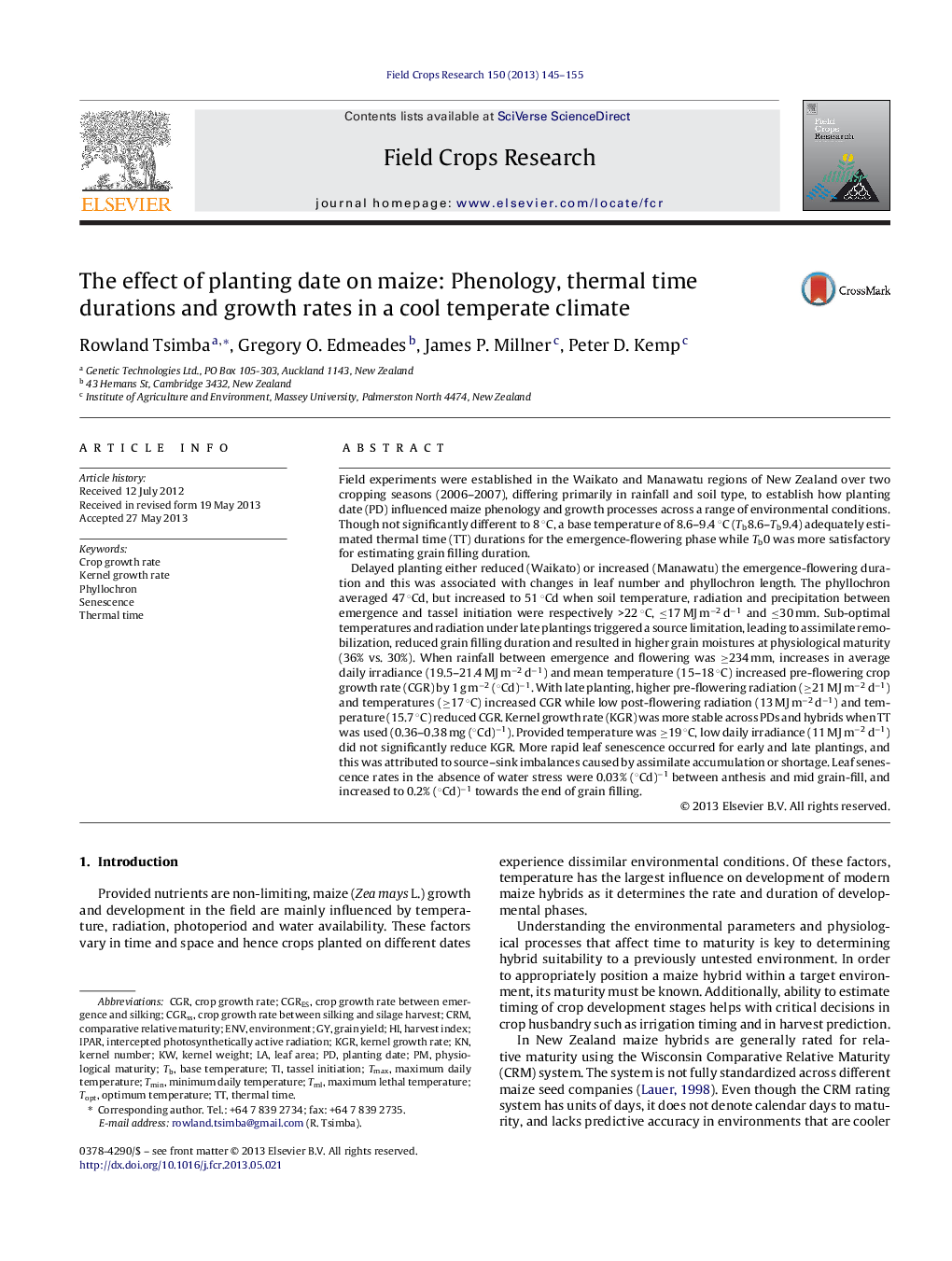| Article ID | Journal | Published Year | Pages | File Type |
|---|---|---|---|---|
| 6375052 | Field Crops Research | 2013 | 11 Pages |
Abstract
Delayed planting either reduced (Waikato) or increased (Manawatu) the emergence-flowering duration and this was associated with changes in leaf number and phyllochron length. The phyllochron averaged 47 °Cd, but increased to 51 °Cd when soil temperature, radiation and precipitation between emergence and tassel initiation were respectively >22 °C, â¤17 MJ mâ2 dâ1 and â¤30 mm. Sub-optimal temperatures and radiation under late plantings triggered a source limitation, leading to assimilate remobilization, reduced grain filling duration and resulted in higher grain moistures at physiological maturity (36% vs. 30%). When rainfall between emergence and flowering was â¥234 mm, increases in average daily irradiance (19.5-21.4 MJ mâ2 dâ1) and mean temperature (15-18 °C) increased pre-flowering crop growth rate (CGR) by 1 g mâ2 (°Cd)â1. With late planting, higher pre-flowering radiation (â¥21 MJ mâ2 dâ1) and temperatures (â¥17 °C) increased CGR while low post-flowering radiation (13 MJ mâ2 dâ1) and temperature (15.7 °C) reduced CGR. Kernel growth rate (KGR) was more stable across PDs and hybrids when TT was used (0.36-0.38 mg (°Cd)â1). Provided temperature was â¥19 °C, low daily irradiance (11 MJ mâ2 dâ1) did not significantly reduce KGR. More rapid leaf senescence occurred for early and late plantings, and this was attributed to source-sink imbalances caused by assimilate accumulation or shortage. Leaf senescence rates in the absence of water stress were 0.03% (°Cd)â1 between anthesis and mid grain-fill, and increased to 0.2% (°Cd)â1 towards the end of grain filling.
Keywords
Related Topics
Life Sciences
Agricultural and Biological Sciences
Agronomy and Crop Science
Authors
Rowland Tsimba, Gregory O. Edmeades, James P. Millner, Peter D. Kemp,
